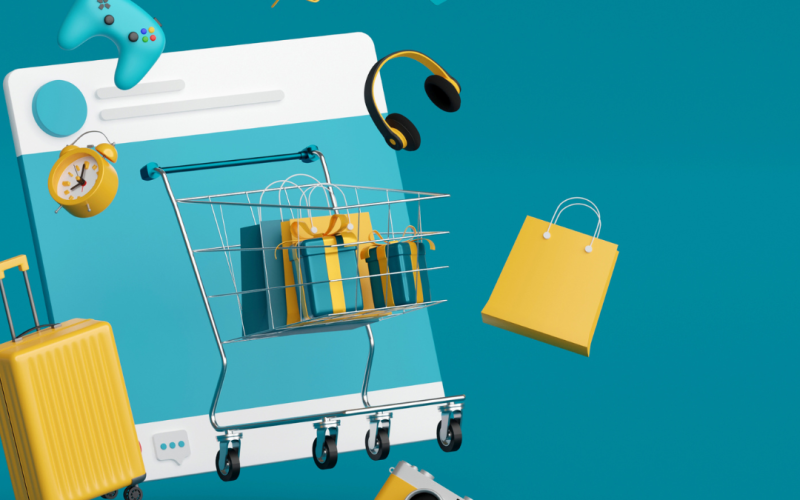In recent years, the Philippines has witnessed an impressive growth in its digital economy. As of 2024, more than 70% of Filipinos are active internet users, with a staggering number of them making purchases online. This trend is expected to continue into 2025 and beyond, driven by the rise of mobile technology, social media, and digital payment systems.
Economic Growth and Digital Connectivity
The Philippine economy is growing steadily, with a projected GDP growth of 6.5% in 2025. This growth is coupled with significant advancements in digital infrastructure, including the nationwide rollout of 5G technology and improvements in internet speed and accessibility. With more Filipinos having access to the internet, especially in rural areas, businesses can reach a much larger audience than ever before.
Additionally, the government has shown increasing support for the digital economy, with policies designed to promote digital entrepreneurship. These include tax incentives for e-commerce startups and the Digital Transformation Act, which aims to digitize business processes across various sectors. Such initiatives ensure a conducive environment for starting and scaling an e-commerce business.

In this article, we’ll explore why starting an e-commerce business in the Philippines in 2025 is not only a lucrative move but a strategically sound one.
A Booming Consumer Market
One of the most compelling reasons to start an e-commerce business in the Philippines in 2025 is the country’s expanding consumer market. The Philippines is home to a young and tech-savvy population, with a median age of just 24 years. This demographic is not only digitally literate but also enthusiastic about online shopping.
The Rise of Online Shoppers
In 2023, the Philippines was ranked as one of the fastest-growing e-commerce markets in Southeast Asia. The majority of online shoppers are between the ages of 18 and 34, making it a prime target audience for businesses. The increasing number of Filipino online shoppers, coupled with their growing purchasing power, presents a massive opportunity for e-commerce entrepreneurs.
In 2025, consumer behavior will continue to shift towards online shopping. Filipinos are now more comfortable buying products online, from fashion and electronics to groceries and services. The convenience of shopping from home, coupled with the rise of online payment options, means that e-commerce will continue to thrive in the country.
Cost-Effective Business Setup
Starting an e-commerce business in the Philippines is relatively cost-effective compared to other countries. The Philippines has one of the lowest startup costs in Southeast Asia, particularly in terms of labor and operational expenses. Local talent is skilled and affordable, allowing entrepreneurs to build a strong team without breaking the bank.
Furthermore, setting up an e-commerce store does not require significant upfront capital. Thanks to the wide availability of user-friendly platforms like Shopify, WooCommerce, and Lazada, setting up an online business is easier and more affordable than ever. Entrepreneurs can start with minimal inventory and scale as demand grows.
Digital Infrastructure
In 2025, digital infrastructure in the Philippines is set to improve further. The country is investing heavily in 5G technology, which will ensure faster internet speeds and more reliable connections for both businesses and consumers. This will provide a more seamless online shopping experience, allowing customers to browse, shop, and pay with greater ease.
Online Payment Systems and Digital Wallets
Online payment platforms such as GCash, PayMaya, and digital banking services have grown in popularity in the Philippines. These platforms have made it easier for consumers to pay for their purchases securely and conveniently. E-commerce entrepreneurs can tap into this growing market by offering a wide range of payment options to suit the preferences of Filipino consumers.
Moreover, the development of digital banking services allows small businesses to open online accounts with minimal paperwork, providing a smooth process for handling business finances.
The Power of Social Media in E-Commerce
In the Philippines, social media is not just for staying connected; it is an essential tool for business marketing and sales. Filipinos are some of the most active users of social media platforms, with platforms like Facebook, Instagram, and TikTok being the most popular.
Social media is an effective way for e-commerce businesses to promote products and engage directly with their target audience. By leveraging influencer marketing, businesses can drive brand awareness and increase sales. With the rise of social commerce, selling directly through social media platforms has become a common practice. Social media platforms also provide insights and tools that help e-commerce businesses improve their marketing strategies.
Opportunities in Philippine E-Commerce
The e-commerce industry in the Philippines is witnessing explosive growth, making it an exciting time for entrepreneurs and investors alike. As more Filipinos turn to online shopping for convenience, the market is ripe with opportunities across various sectors. The following are key areas of opportunity in Philippine e-commerce that aspiring business owners can tap into:
1. Mobile Commerce (M-Commerce)
With the Philippines being one of the fastest-growing mobile phone markets in Southeast Asia, mobile commerce has become a dominant force. Filipinos are increasingly using their smartphones to browse, compare prices, and make purchases online. M-commerce, especially among younger generations, is quickly becoming the preferred way to shop. Entrepreneurs can capitalize on this trend by ensuring their e-commerce platforms are mobile-friendly, offering seamless mobile experiences that cater to the on-the-go consumer.
2. Online Grocery Shopping
The global pandemic accelerated the adoption of online grocery shopping, and this trend is continuing in the Philippines. Consumers are looking for ways to conveniently purchase fresh produce, packaged goods, and household supplies online. E-commerce businesses that cater to this sector can tap into a loyal customer base, especially by offering delivery services to urban and rural areas. Additionally, niche areas such as organic food and locally sourced products can provide unique selling points.
3. Fashion and Apparel
Fashion remains one of the fastest-growing e-commerce categories in the Philippines. As more Filipino consumers embrace online shopping, clothing, accessories, and footwear sales are surging. The rise of influencer marketing and social media has also contributed to the growth of online fashion shopping. Entrepreneurs can explore this market by offering trendy, affordable, and culturally relevant fashion options. Additionally, niche markets like plus-size clothing, sustainable fashion, and local artisans’ products are gaining traction.
4. Health and Beauty Products
Health and beauty products, including skincare, makeup, vitamins, and supplements, are in high demand among Filipino consumers. E-commerce platforms focusing on these products can benefit from the increasing awareness of health and wellness among Filipinos. Offering personalized recommendations, subscription-based services, and exclusive online deals can attract a dedicated customer base. Additionally, the rise of local brands focusing on natural, organic, and cruelty-free products presents opportunities for differentiation in this sector.
5. Digital Goods and Services
The demand for digital goods such as software, e-books, online courses, and entertainment content is on the rise. With a growing number of Filipinos gaining internet access and digital literacy, opportunities in online education, entertainment (movies, music, games), and digital subscriptions are plentiful. Entrepreneurs can create platforms that offer specialized content or services, such as online learning modules or curated digital media, to cater to the growing demand.
6. Home Improvement and Furniture
As more Filipinos invest in improving their homes, there is a significant opportunity in the online sale of home goods, furniture, and decor. The increasing interest in interior design, especially post-pandemic, has made this market highly competitive yet lucrative. By offering affordable, quality products and focusing on convenience and fast delivery, e-commerce businesses can build a loyal customer base. Online platforms that allow customers to customize products or visualize them in their spaces can also gain an edge.
7. Sustainable and Eco-Friendly Products
With increasing environmental consciousness, Filipinos are becoming more aware of the impact their purchases have on the environment. E-commerce businesses that offer sustainable, eco-friendly products are seeing growth, whether it’s zero-waste goods, eco-conscious fashion, or renewable energy solutions. Entrepreneurs entering this market can capitalize on a growing consumer base that values sustainability and ethical business practices.
8. Niche Markets and Customization
The Philippines is a diverse market with varying consumer needs across different regions, cultures, and income levels. E-commerce businesses that cater to niche markets, such as pet products, local handicrafts, or specialized hobbies, can stand out in the crowded digital marketplace. Additionally, offering customizable products, such as personalized gifts or made-to-order goods, can help attract customers looking for unique and tailored experiences.
9. E-Commerce as a Service (ECaaS)
The growing e-commerce market also creates a need for businesses that support e-commerce operations. From payment processing, logistics, inventory management, to digital marketing services, there is a rising demand for companies that offer specialized e-commerce solutions. Entrepreneurs who have expertise in these areas can build businesses that cater to the needs of online store owners who may not have the time or resources to handle these aspects of their operations.
10. Cross-Border E-Commerce
With the Philippines’ strategic location in Southeast Asia, cross-border e-commerce has emerged as a significant opportunity. Filipino businesses can sell to international markets, particularly the growing demand from overseas Filipino workers (OFWs) and Filipino communities abroad. Likewise, entrepreneurs can import foreign goods and sell them locally. Platforms like Lazada and Shopee already allow businesses to sell to neighboring ASEAN countries, opening the door for entrepreneurs to tap into wider markets.
11. Logistics and Delivery Solutions
The e-commerce boom has created a surge in demand for efficient logistics and delivery services. E-commerce businesses require fast, reliable, and cost-effective shipping to meet customer expectations. Entrepreneurs can explore opportunities in providing third-party logistics services, delivery platforms, or supply chain solutions tailored for the growing e-commerce sector. Companies that specialize in rural delivery or last-mile solutions can tap into underserved markets and improve overall customer satisfaction.
Overcoming Challenges in the E-Commerce Space
While starting an e-commerce business in the Philippines offers incredible opportunities, there are also challenges to consider. Competition is fierce, and businesses must differentiate themselves from the crowd. To stand out, entrepreneurs need to focus on unique selling propositions (USPs), excellent customer service, and tailored marketing campaigns that speak to the Filipino consumer.
Logistics and Delivery
The Philippines is an archipelago, which can present logistical challenges for e-commerce businesses. However, with improvements in delivery services and partnerships with logistics providers, businesses can ensure timely and reliable delivery across the country. Companies like Lalamove and GrabExpress have made last-mile delivery more efficient, and entrepreneurs can leverage these services to fulfill orders quickly.
Managing Payment Security
Another challenge is ensuring secure online transactions. With the increasing number of online fraud cases, it’s important for e-commerce businesses to invest in secure payment gateways and robust cybersecurity measures. Offering cash on delivery (COD) as an alternative payment option can also help build trust with customers who may be hesitant to use online payment methods.
Legal and Regulatory Considerations
Starting an e-commerce business in the Philippines requires compliance with local laws and regulations. Entrepreneurs need to ensure they have the proper business permits, including a registration with the Securities and Exchange Commission (SEC), Bureau of Internal Revenue (BIR), and local government units.
The Philippines also has strict data privacy laws, such as the Data Privacy Act of 2012, which businesses must comply with. E-commerce businesses must ensure that they handle customer data securely and protect privacy.
How to Get Started with E-Commerce in the Philippines
Starting an e-commerce business in the Philippines is straightforward, but it requires careful planning. Here’s a step-by-step guide to help you get started:
1. Choose a Business Model.
Determine whether you want to sell products through your website or through online marketplaces like Lazada or Shopee. You can also sell via social media platforms.
2. Register Your Business.
Obtain the necessary permits and licenses from the SEC, BIR, and local government units.
3. Set Up Your E-Commerce Platform.
Choose the right e-commerce platform based on your needs and budget. Consider using platforms like Shopify, WooCommerce, or Lazada.
4. Create a Marketing Plan.
Develop a digital marketing strategy that includes social media, SEO, and email marketing.
5. Provide Secure Payment Options.
Set up secure payment gateways to ensure smooth transactions for your customers.
6. Focus on Customer Service.
Offer excellent customer support and make it easy for customers to return products or resolve issues.
Success Stories of E-Commerce Entrepreneurs
Several successful e-commerce businesses in the Philippines serve as inspiration for aspiring entrepreneurs. For example, brands like BeautyMNL, an online beauty retailer, have achieved great success by catering to the unique needs of Filipino consumers. Another success story is Fresh.ph, an online grocery delivery service, which has grown by meeting the demand for fresh and quality groceries delivered to your doorstep.
These businesses have proven that with the right strategy, e-commerce in the Philippines can be a lucrative and rewarding venture.
The Future of E-Commerce in the Philippines
The future of e-commerce in the Philippines is bright, with advancements in technology, the rise of the digital economy, and changing consumer behaviors. By 2025, we can expect to see the continued growth of social commerce, the widespread adoption of artificial intelligence, and even more seamless online shopping experiences.
Sustainability will also become a key consideration for Filipino consumers. Businesses that offer eco-friendly products and services will be better positioned to capture the growing demand for sustainable goods.
Final Thoughts
The Philippines presents a wealth of opportunities for entrepreneurs looking to start an e-commerce business in 2025. With a rapidly growing market, favorable government policies, and a digitally engaged population, now is the ideal time to enter the e-commerce space. Entrepreneurs can take advantage of low startup costs, improving logistics, and a young, tech-savvy consumer base to build a successful online business. The combination of these factors makes the Philippines one of the best places to start and grow an e-commerce business in 2025.
… and you might just need our assistance.
Ready to Start Your Business? Starting a business in the Philippines is an exciting journey, and Filepino is here to make it easier for you. From business registration and legal compliance to providing virtual office services and more, we offer the support you need to get your business up and running smoothly. Set up a consultation with FilePino today! Call us at (02) 8478-5826 (landline) and 0917 892 2337 (mobile) or send an email to info@filepino.com.









